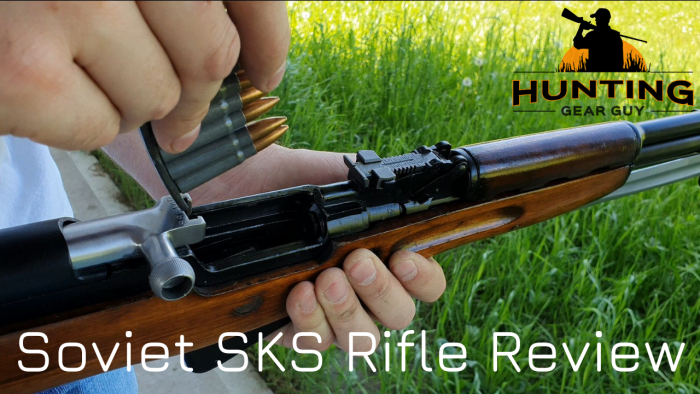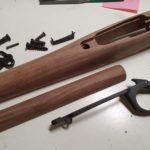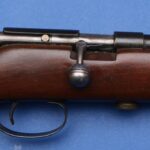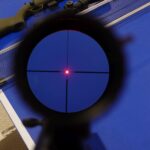It’s a bit funny reviewing something that’s 60-70 years old, but due to production numbers, the cost of an SKS is very low in countries where it’s still being imported like Canada. That cost ($250) combined with inexpensive ammo, makes the SKS a fantastically fun, cheap plinking rifle, and a lot of people have requested I do a proper breakdown of an SKS. SKS parts at Brownells.
Note: The price of SKS’s has increased substantially since I wrote this review
Feeding the Beast: 7.62x39mm
Stepping away from the rifle itself, let’s take a look at the cartridge: 7.62X39. Typically, we’re talking about a 123 grain, 30 caliber bullet at around 2,400 fps. Similar in power to a 30-30. Compared with other rifle cartridges of the time, it was pretty revolutionary. Its reduced recoil and smaller size meant fast follow up shots and more capacity. In a hunting application, the smaller size and minor recoil compared to a full power rifle round aren’t necessarily as important, depending what you’re hunting. Soft point rounds are readily available and should be used instead of surplus full metal jacket rounds. Energy is pretty low: 2000 ft-lbs at the muzzle, and it drops below 1000 ft-lbs at 150 yards; again, very similar to the 30-30. So when we’re looking at applications for this round, they should be limited to 150-ish yards. Nothing really wrong with that; so long as your shots are going to be close in, 7.62x39mm will do the job. Crates of inexpensive surplus ammo are readily available for great amounts of practice and fun, and soft point ammo is usually reasonably priced as well, albeit not as readily available as more traditional hunting cartridges.

Mounting Optics on the SKS
In short: try not to. The iron sights are solid, and fit the “rough and tumble, short range rifle” application really well. Receiver cover mounted scopes are either flimsy or make the rifle more tedious to take down for cleaning because they use set screws. The accuracy and range of the SKS don’t really require magnified optics either. Have I failed to dissuade you? No? OK, here are some options that might work:
- A low, rear sight mounted red dot improves the speed at which you can take a shot, at the cost of using another thing that can break, another thing that needs batteries, and more $$ cost on an inexpensive, short range rifle. Midwest Industries makes one that mates with a Burris Fast Fire II or clones and mounts exceptionally low.
- Williams SKS Firesights. With a rear peep and fibre optic front sight, they’re going to be easier to see and shoot with for most people.
- There are also thinner, colored front sights that can be easier to pick up and are easy to use.
- Tech sights
If you’re really adamant about using a magnified optic on the SKS, go all out and get a drill and tap mount. They’re solid, you can still take down the receiver cover normally, and they’re not too expensive. There’s also the full length rail that goes right from the rear receiver pin to the rear sight block, but I don’t have enough experience with them, and the extra cost gets this rifle very close to much more capable bolt action hunting rifles.
The SKS as a Hunting Platform
As a serious hunting rifle, there are a few changes I’d recommend for a typical SKS:
- Leave the bayonet, cleaning rod, and cleaning module from the buttstock back at home or the hunting camp if they rattle at all on your rifle. The bayonet can be used as a field monopod, but keeping our 150 yard shot in mind, you shouldn’t need the weight or noise.
- If your safety is spring loaded (my Soviet SKS wasn’t) consider modifying it to soften the *click* as the safety goes off. Again, this is for noise considerations with a short range rifle when game are going to be close in.
- If you hunt without a big heavy jacket or you’re taller and prefer a longer length of pull, take a look at aftermarket stocks or adding on a slip-on buttpad. The factory SKS stock has a pretty short length of pull and can be uncomfortable for some. Don’t rush to a plastic stock though, because some can make it tougher to strip down the rifle, or make it front heavy.
- Wear it in: a straight, post-war SKS may still need to be shot and worn in. My 1951 Soviet SKS had an awful trigger and a safety that was practically unusable out of the box.
- Get a trigger job done if yours needs it. Either yourself off a video if you’re handy and careful, or by a qualified gunsmith. Another option is to get aftermarket trigger components like this one from Murray.
Modifications I Wouldn’t Recommend for a Hunting SKS
Because of how ubiquitous the SKS is, there are lots of mods out there, some of which don’t make a lot of sense for a hunting rifle.
- Receiver cover scope mounts. The receiver cover isn’t built to be solid to the receiver, it has to come off to properly clean the rifle. If you’re strictly hunting with it, and strictly using a low volume of non-corrosive ammo, you might be able to get away without fully cleaning the bolt/bolt carrier often.
- Detachable mags. Normally, I prefer DM’s over a hinged floorplate, but I just haven’t liked the duckbill mags for the SKS. The factory 10 round fixed is more reliable, low profile, fast enough to reload with stripper clips and unless you’re culling a pile of pigs like Steve Lee or are in the US where you can have 5+ round mags, I think the fixed mag works just fine.
- Muzzle brakes or other muzzle devices. Unnecessary for a hunting rifle in this caliber, just adds weight and length.
Overall, the SKS isn’t a great deer hunting rifle. Pick up a Savage Axis instead.

Quality
All Over The Board. These were made during WW-II, in developing countries, and under varying cost requirements.
For the Norinco Type 56 SKS’s, I’ve found they: have pretty soft stocks, have chrome barrels (nice!), and condition wasn’t that bad. My Norinco was a ton of fun, but the barrel was drilled off-axis, giving a horizontal spread when the barrel heated up. Accuracy was also pretty awful: 4-6 MOA if I was lucky.
For my Soviet SKS with laminate stock: the rifle I bought for $219 was unused, parts were very tight, and the laminate stock was kinda cool. Better than a plain old boring stock. That all said, no matter which SKS you get, there will be visible milling marks and rough finished surfaces visible. Cabela’s Canada has SKS’s for around $220-$250.






















